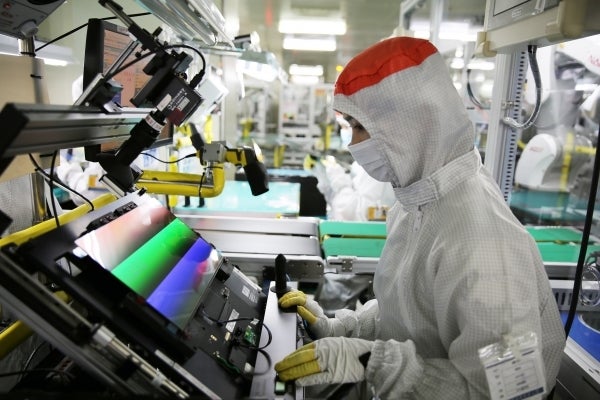iPhone production just went up by 4 million units, and Samsung is the biggest beneficiary

iPhone 16 Pro Max and Samsung Galaxy S25 Ultra. | Image credit — PhoneArena
Apple’s production strategy also highlights its efforts to diversify its manufacturing base. While China and Vietnam remain key hubs, both countries are facing potential tariff hikes of up to 145 and 46 percent, respectively. That’s a big risk for Apple, which is why we’re also seeing a greater push toward production in India, and Brazil for the iPhone 16e. By spreading out where its devices are made, Apple is trying to protect itself from future disruptions.

Samsung Display worker in South Korea. | Image credit — Samsung Display
Samsung and other South Korean suppliers stand to benefit
This production increase is already proving beneficial for Apple’s component suppliers in South Korea. Companies like Samsung Display, LG Display, and LG Innotek are major players in Apple’s supply chain, providing screens and camera modules. Last year, more than 80 percent of LG Innotek’s revenue came from Apple orders. Samsung Display is also heavily dependent on Apple, with over 40 percent of its income linked to the company.
It is worth noting is that the devices being produced right now are not new models. These are existing iPhones and iPads that have already launched, meaning Apple is simply stocking up before releasing the iPhone 17 later this year. If tariff pressures ease by then, it could give the company more flexibility heading into the busy fall season.
Apple’s proactive approach makes a lot of sense. It shows the company is not waiting around to see how trade policy plays out. Instead, it’s taking steps to keep products flowing and avoid supply chain chaos. With the iPhone 17 just around the corner, this early move could give Apple a smoother path forward, at least when it comes to their existing devices.










Things that are NOT allowed: